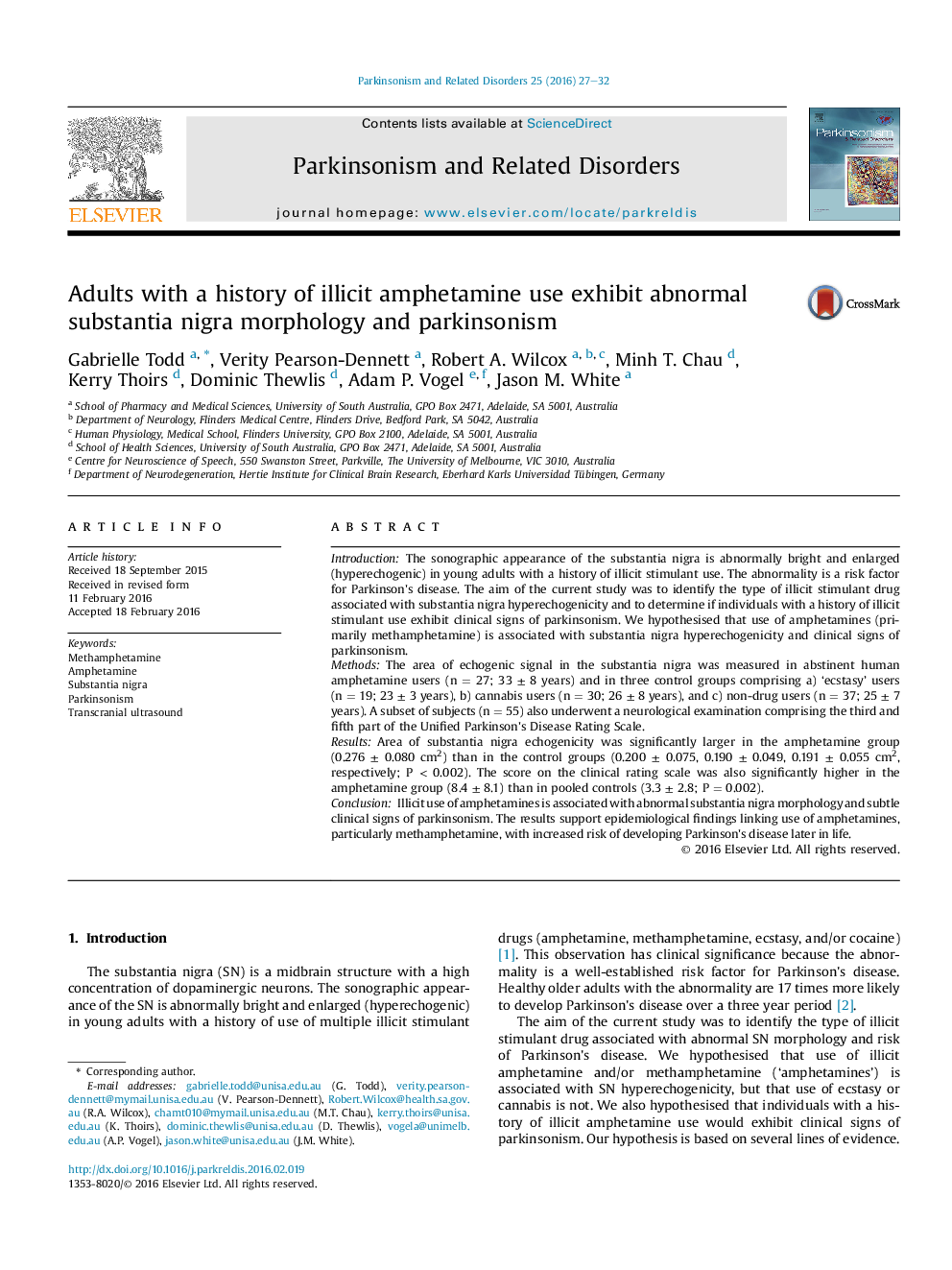| کد مقاله | کد نشریه | سال انتشار | مقاله انگلیسی | نسخه تمام متن |
|---|---|---|---|---|
| 1920239 | 1535824 | 2016 | 6 صفحه PDF | دانلود رایگان |
• History of methamphetamine use is associated with abnormal substantia nigra morphology in conscious humans.
• Methamphetamine use is associated with clinical signs of parkinsonism.
• Results support epidemiological findings linking methamphetamine use to increased risk of developing Parkinson's disease.
IntroductionThe sonographic appearance of the substantia nigra is abnormally bright and enlarged (hyperechogenic) in young adults with a history of illicit stimulant use. The abnormality is a risk factor for Parkinson's disease. The aim of the current study was to identify the type of illicit stimulant drug associated with substantia nigra hyperechogenicity and to determine if individuals with a history of illicit stimulant use exhibit clinical signs of parkinsonism. We hypothesised that use of amphetamines (primarily methamphetamine) is associated with substantia nigra hyperechogenicity and clinical signs of parkinsonism.MethodsThe area of echogenic signal in the substantia nigra was measured in abstinent human amphetamine users (n = 27; 33 ± 8 years) and in three control groups comprising a) ‘ecstasy’ users (n = 19; 23 ± 3 years), b) cannabis users (n = 30; 26 ± 8 years), and c) non-drug users (n = 37; 25 ± 7 years). A subset of subjects (n = 55) also underwent a neurological examination comprising the third and fifth part of the Unified Parkinson's Disease Rating Scale.ResultsArea of substantia nigra echogenicity was significantly larger in the amphetamine group (0.276 ± 0.080 cm2) than in the control groups (0.200 ± 0.075, 0.190 ± 0.049, 0.191 ± 0.055 cm2, respectively; P < 0.002). The score on the clinical rating scale was also significantly higher in the amphetamine group (8.4 ± 8.1) than in pooled controls (3.3 ± 2.8; P = 0.002).ConclusionIllicit use of amphetamines is associated with abnormal substantia nigra morphology and subtle clinical signs of parkinsonism. The results support epidemiological findings linking use of amphetamines, particularly methamphetamine, with increased risk of developing Parkinson's disease later in life.
Journal: Parkinsonism & Related Disorders - Volume 25, April 2016, Pages 27–32
